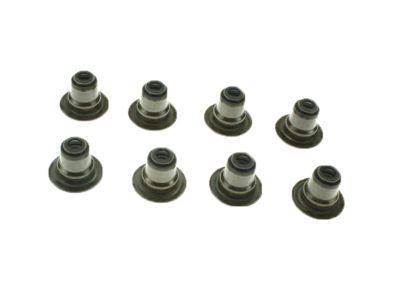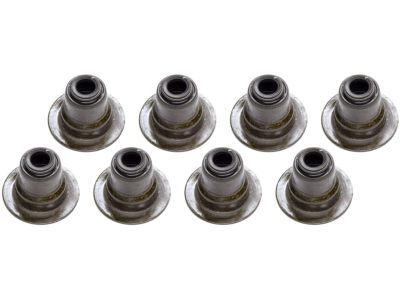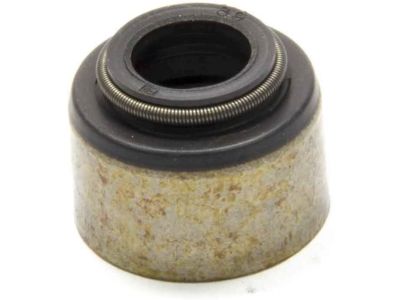
My Garage
My Account
Cart
Genuine Pontiac Grand Prix Valve Stem Oil Seal
Engine Valve Seal- Select Vehicle by Model
- Select Vehicle by VIN
Select Vehicle by Model
orMake
Model
Year
Select Vehicle by VIN
For the most accurate results, select vehicle by your VIN (Vehicle Identification Number).
19 Valve Stem Oil Seals found
Pontiac Grand Prix Seal Kit,Exhaust Valve Stem Oil
Part Number: 12482062$40.12 MSRP: $69.18You Save: $29.06 (43%)Ships in 1-3 Business DaysPontiac Grand Prix Seal Kit,Intake Valve Stem Oil
Part Number: 12482063$36.90 MSRP: $63.11You Save: $26.21 (42%)Ships in 1-3 Business DaysPontiac Grand Prix Seal,Valve Stem Oil
Part Number: 10212810$4.99 MSRP: $7.97You Save: $2.98 (38%)Ships in 1-3 Business DaysPontiac Grand Prix Seal Unit, Valve Stem Oil (Free Of Asbestos)
Part Number: 10054539$19.93 MSRP: $40.20You Save: $20.27 (51%)Pontiac Grand Prix Seal,Valve Stem Oil
Part Number: 10214034$1.71 MSRP: $2.72You Save: $1.01 (38%)Ships in 1-3 Business DaysPontiac Grand Prix Seal Asm,Intake Valve Stem Oil
Part Number: 88891774$5.68 MSRP: $8.93You Save: $3.25 (37%)Ships in 1-3 Business DaysPontiac Grand Prix Seal,Valve Stem Oil
Part Number: 22531217$0.18 MSRP: $0.28You Save: $0.10 (36%)Ships in 1-3 Business DaysPontiac Grand Prix Seal,Intake Valve Stem Oil
Part Number: 24508663$16.32 MSRP: $25.69You Save: $9.37 (37%)Ships in 1-3 Business DaysPontiac Grand Prix Seal,Intake Valve Stem Oil
Part Number: 88891780$6.05 MSRP: $9.67You Save: $3.62 (38%)Ships in 1-3 Business DaysPontiac Grand Prix Seal Assembly, Valve Stem Oil
Part Number: 24508009$6.96 MSRP: $11.10You Save: $4.14 (38%)Ships in 1-3 Business DaysPontiac Grand Prix Seal Asm,Exhaust Valve Stem Oil (.015 Oversize) *W/Bronze Metal
Part Number: 24508664$16.32 MSRP: $25.69You Save: $9.37 (37%)Ships in 1-3 Business DaysPontiac Grand Prix Seal Asm,Exhaust Valve Stem Oil (.394Mm Os)
Part Number: 88984161$9.88 MSRP: $16.18You Save: $6.30 (39%)Ships in 1-2 Business Days
Pontiac Grand Prix Valve Stem Oil Seal
Each OEM Pontiac Grand Prix Valve Stem Oil Seal we offer is competitively priced and comes with the assurance of the manufacturer's warranty for the part. Furthermore, we guarantee the speedy delivery of your orders right to your doorstep. Our hassle-free return policy is also in place for your peace of mind.
Pontiac Grand Prix Valve Stem Oil Seal Parts Questions & Experts Answers
- Q: How can broken Rocker Shaft Spring Kit and Valve Stem Oil Seal be replaced without removing the cylinder head in 2.2L four cylinder engine on Pontiac Grand Prix?A:Looseness of valve springs and damaged valves stem seal can be remedied without having to take off the cylinder head; it requires only two special tools and a compressed air. If compressed air is not available a piece of nylon rope can be used to keep the valves from falling into the cylinder. To start, one will have to take off the valve cover and the spark plug from the side of the cylinder which is affected or all spark plugs if changing all valve stem seals. When the piston is at the TDC on the compression stroke turn the crankshaft and using an adapter attach an air hose from a pressurized air source to the spark plug hole. Take off the nut, pivot ball and rocker arm in respect of the defective valve to have the valves compressed by applying some air pressure. In case of air pressure failure, valve job may be required. A worse solution is to partially insert the piston in front of the TDC, through the intake valve, stuff nylon ropes into the combustion chamber, and start to turn the crankshaft until some resistance is met. It is advisable to use shop rags so that the parts will not fall into the engine, and then compress the valve spring using valve spring compressor and remove keepers. After that, unscrew the spring retainer and the valve spring, and then examine the stem to determine if it is worn out, and if the stem can move smoothly within the guide. Pressurise the air to lock the valve back in place, then grease the stem of the valve, and replace the valve guide seal. Position the spring and retainer, then compress the spring to put the keepers on, if grease is needed it should be applied at this stage. Turn off the air hose, take off the adapter and the return of the rocker arms and the pushrods and put the spark plugs and the valve cover back on. Last of all, switch on the engine and observe areas such as the oil drips and abnormal sounds.
Related Pontiac Grand Prix Parts
Browse by Year
2008 Valve Stem Oil Seal 2007 Valve Stem Oil Seal 2006 Valve Stem Oil Seal 2005 Valve Stem Oil Seal 2004 Valve Stem Oil Seal 2003 Valve Stem Oil Seal 2002 Valve Stem Oil Seal 2001 Valve Stem Oil Seal 2000 Valve Stem Oil Seal 1999 Valve Stem Oil Seal 1998 Valve Stem Oil Seal 1997 Valve Stem Oil Seal 1996 Valve Stem Oil Seal 1995 Valve Stem Oil Seal 1994 Valve Stem Oil Seal 1993 Valve Stem Oil Seal 1992 Valve Stem Oil Seal 1991 Valve Stem Oil Seal 1990 Valve Stem Oil Seal 1989 Valve Stem Oil Seal 1988 Valve Stem Oil Seal 1987 Valve Stem Oil Seal 1986 Valve Stem Oil Seal 1985 Valve Stem Oil Seal 1984 Valve Stem Oil Seal 1983 Valve Stem Oil Seal 1982 Valve Stem Oil Seal


























